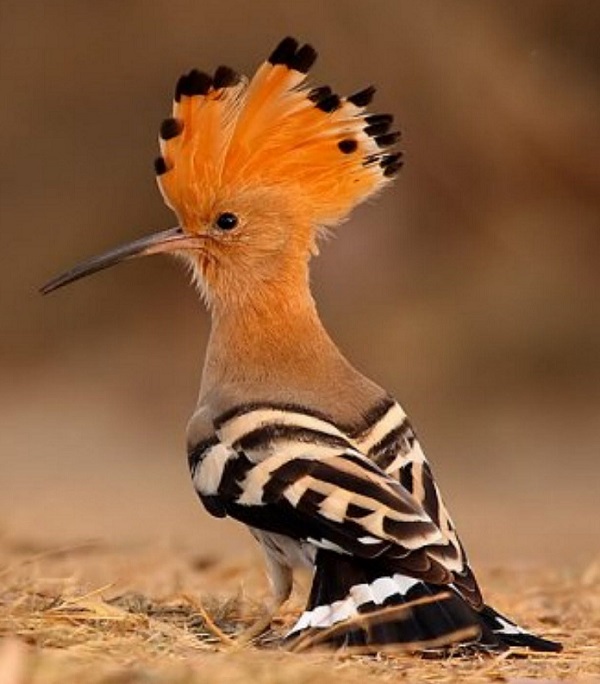FWP:
SETS == A,B
For background see S. R. Faruqi's choices. This verse is NOT one of his choices; I thought it was interesting and have added it myself. For more on Ghalib's unpublished verses, see the discussion in {4,8x}.
The hoopoe is of course famous for being the messenger of Hazrat Solomon, and is well-known in Persian poetry. Thus it's interesting that Ghalib makes no reference to the hoopoe in the whole of the published divan.
Once the Messenger reaches the beloved's street, then fatigue or flirtatiousness (or both) makes him reluctant to move on. Since it's an 'A,B' verse, we have to decide for ourselves whether it's a verse of complaint about the speaker's own dilatory Messenger, illustrated with reference to the hoopoe; or whether the hoopoe himself might be the messenger referred to in the first line.
Zamin thinks that the fatigued bird tucks his head under his wing to sleep, so that his crest or 'comb' seems to be combing and straightening his messy wing-feathers. Gyan Chand thinks that the bird, newly invigorated by the air of the beloved's street, is using his comb and generally preening and adorning himself. The imagery doesn't seem carefully enough framed to warrant an attempt at detailed analysis. Surely what really pleased Ghalib was the chance to bring mashshāt̤ah and zulf and (above all) the shānah of the hoopoe together in such an esoterically clever and original way.

Zamin:
shānah-e hudhud = the crest or tuft on the head of a hoopoe, which has a similarity with a comb.
Addressing the beloved, he says 'In your street my Messenger keeps practicing the adornment of lagging/fatigue. It's as if my Messenger is the hoopoe, the wing of whose flight, like loosened curls, has become tangled in his tuft (comb). Or you could put it like this: that he has become busy in arranging with his 'comb' the curls of his wing of flight, and this act is the adornment of lagging/fatigue.
The rule is that when birds sleep, they sleep with their head under their wing. From this the poet has created this simile, and he has created a fit with the Messenger's lagging/fatigue, because the hoopoe was also the messenger of Hazrat Solomon. (240-41)